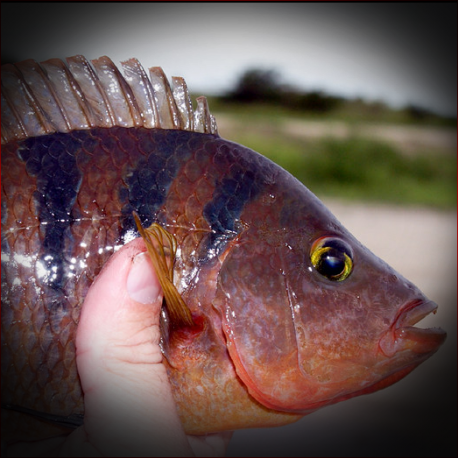More info
Datasheet
| Minimum Tank Size | 793 litres / 209.49 US gallons |
| Maximum Size | 40.0cm / 15.75inches |
| Temperature | 20°C / 68.00°F - 30°C / 86.00°F |
| Hardness | 0-20ºdH |
| pH | 7.0-8.0 |
General Description
The Mayan Cichlid, scientifically known as Cichlasoma Urophthalmus, is a hardy and robust fish that can endure and reproduce in full marine conditions. Also known as the Mexican Mojarra, it is occasionally available in the UK and can be sourced through specialized cichlid dealers. Considered a potential pest fish in the USA due to its adaptability to various conditions and the potential threat it poses to native fauna.
Aquarium Setup
Ideal for fresh water but thrives in brackish conditions, the Mayan Cichlid requires ample swimming space in the tank. Providing stable rocks and wood for cover is essential, as this species is known to dig and disturb plants. Potted plants may not survive due to their size, but floating plants or those rooted to wood or rock can be suitable. The water parameters for the tank should ideally have a pH of 7.0-8.0, hardness of 0-20 degrees dH, and a temperature range of 20-30 degrees Celsius (see table).
Behaviour
Territorial and fairly aggressive, the Mayan Cichlid is best suited for a community tank with medium to large fish such as other cichlids, robust characins, and catfish. While success is not guaranteed when introducing other fish, dispersing aggression can help by increasing the number of fish in the tank. Providing sufficient decor for all fish to establish territories is crucial. Alternatively, this species can be kept in a species-only tank with a bonded pair for companionship.
Feeding and Diet
In the wild, the Mayan Cichlid primarily feeds on aquatic invertebrates, although analyses have shown it consumes algae and other plant matter. In captivity, they are not picky eaters and can be fed a staple diet of good cichlid pellets supplemented with meaty foods like prawns and mussels.
Reproduction & Dimorphism
Limited information is available on breeding in captivity, but reproduction is likely similar to other Cichlasoma species. The male Mayan Cichlid is larger, more colorful, and possesses extended dorsal and anal fins compared to the female.
Habitat and Distribution
The Mayan Cichlid predominantly inhabits coastal plains, swamps, marshes, and large ponds in Eastern regions of various Central American countries like Mexico, Belize, Guatemala, Honduras, and Nicaragua. This species can tolerate brackish conditions and is often found in mangrove swamps, coastal lagoons, and other lethargic waters. Introduced populations are also present in the USA and Singapore.

